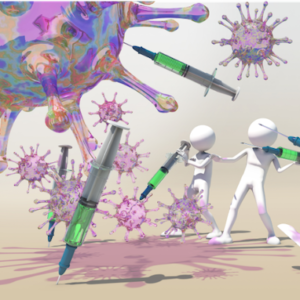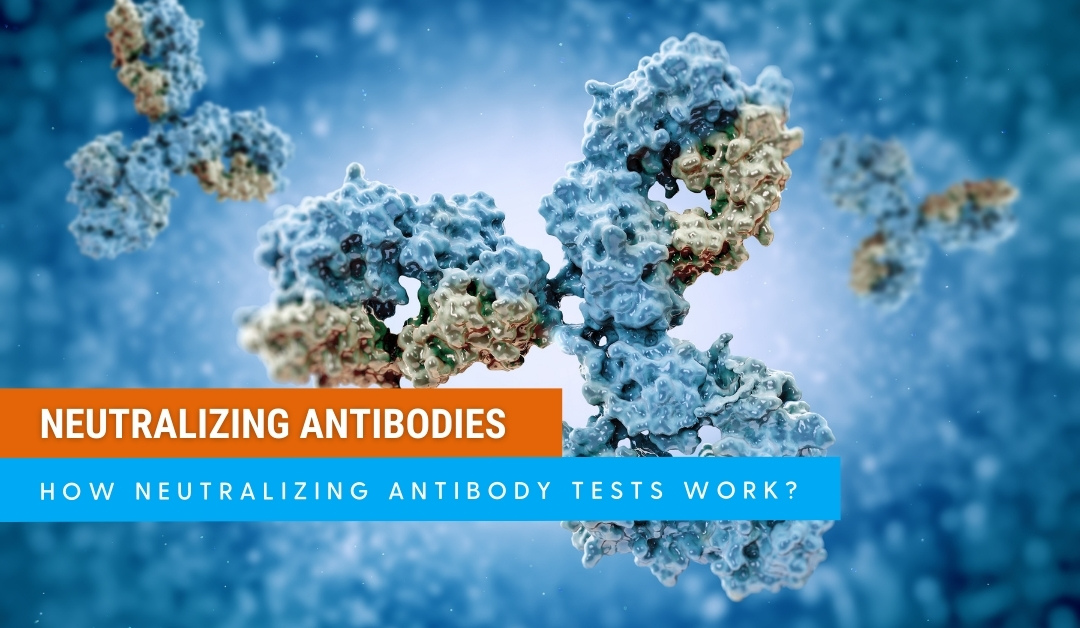What Exactly is a Neutralizing Antibody?
As more and more people in the United States get vaccinated against COVID-19, the number of new cases is falling each day. However, these vaccines are not 100% effective. The Pfizer-BioNTech and Moderna vaccines have efficacy rates of 94%-95%, which, while very high, still leads to the implication that, out of every 100,000 persons receiving these vaccines, 5,000 – 6,000 people will not be protected from COVID-19. This means that some individuals who receive the vaccine may be unaware they’ve failed to develop COVID-19 immunity.

This is where neutralizing antibody tests come into play.
Since the goal of the vaccines is to train the body to produce the neutralizing antibodies that prevent the SARS-CoV-2 virus from entering the host’s cells, testing for antibody levels is a good way to identify whether the vaccine has been successful in encouraging antibody production. If the antibodies are present and in large quantities, then they will bind to the virus’s Spike protein and will have a higher chance of preventing the virus from entering the cell. If the antibodies are not present, then there is a higher risk of infection occurring.
How Neutralizing Antibody Tests Work?
Neutralizing antibody tests are performed by collecting blood samples via blood draw (while rapid tests use finger prick), followed by running those samples through a lateral flow test that detects antibodies. There are two proteins that the antibodies target on the virus: the Spike protein and the Nucleocapsid protein. Antibodies for the Spike protein are more important, however, as they are indicative of the body’s ability to resist and defeat infection.
When an individual’s antibody levels (known as titers) for the Spike protein are high, they are indicative that the person’s immune system has been exposed to the COVID-19 vaccine or the virus itself. Higher levels also indicate a higher chance for the body to fight off severe infection.
Practical Applications and Reopening
As stated previously, higher levels of neutralizing antibodies in the blood will provide a higher level of protection from infection. Antibody levels will vary from person to person. However, meaning these tests can provide people with insight into their own personal resistance and immunity to the SARS-CoV-2 virus. Testing for neutralizing antibodies can also provide insight into the length of time someone is resistant or immune to the virus. This, in turn, can assist with the process of reopening, especially when used in conjunction with surveillance testing by schools, workplaces, and communities.
Admittedly, while most surveillance testing programs to this point have been established to assess COVID-19 infection rates, communities and businesses should keep in mind they can also test for neutralizing antibodies through their surveillance programs in order to gauge immunity levels and inform decision making.
In summary, while surveillance testing is a valuable way to guide the process of reopening on a larger scale, neutralizing antibody testing is a useful resource for individuals wanting to know about their resistance or immunity to guide their decisions about going back to the office or socializing with others.
What to Look for in a Neutralizing Antibodies Test?
Obtaining Covid-19 Neutralization Assays is an important step to take in introducing this test to your lab. Good assays have fast procedural times (around 80 minutes) and can detect and rank circulating SARS-CoV-2 neutralizing antibodies of all lg classes in human plasma or serum. Additionally, these assays have an assay range of 0-100% neutralization, meaning that your lab can find the most accurate results to provide to those who have taken the test.
Whether through referencing the testing out to another lab, or conducting it in your own lab, these tests will help people make informed decisions regarding how they should go about their daily lives as our country continues to reopen. Contact Lighthouse Lab Services to discuss setting up your lab to offer Neutralizing Antibody testing.
Lighthouse Lab Services offers assistance to the clinical lab industry via Lab Management, Recruiting, LIS, Consulting, and Lab Director Services. Please, feel free to reach out to us if your lab needs any help.
Also, we operate the country’s largest members-only groups on social media. You’re welcome to join:

If the test is performed by finger prick, how will it reach to lab?
Neutralizing antibody tests are performed by collecting blood samples via blood draw, while rapid tests use finger prick. We clarified it in the article after your comment. Thanks for a great question.